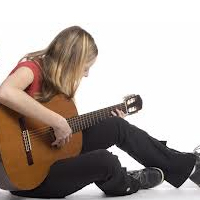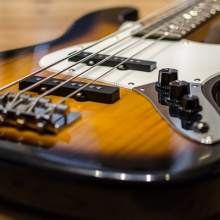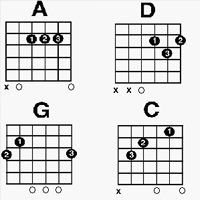Basic Guitar Lessons for Free
Thinking of how to learn guitar without paying such an enormous amount on an instructor? Problem solved. This article will prove that learning to play and master a guitar need not be expensive.
There are two practical ways to learn how to play a guitar. First would be through finding someone who knows all the basic essentials. Make sure you know him; a close friend, classmate or acquaintance. Possible, your special someone. He should be patient enough to endure the tireless hours of practice. Because if he won’t be, you’re dead meat. He could teach you tips and techniques to proper fingering. This is difficult if you don’t know anyone but would be a big advantage if you do know someone.
Second practical way of learning your way through guitar lessons is to go online. It’s a personal mentor, a friend, and a reference material all in one package. Unlike having a personal trainer, an online tutorial gives you the freewill to agree and disagree. You can rest if you’re tired. Give yourself time to practice those hard notes. The best part is, nobody would scold you with every wrong string you’ve plucked. You are your own mentor.
Summarized below are 5 easy steps on how to learn how to play a guitar.
Step 1. You’ll be needing a guitar (might be your own or someone else’s, be sure it has 6 strings), a pick (or your fingers can do just fine), stool or chair, and an overflowing amount of dedication and patience. To be able to start playing, you must first know the different parts of a guitar and where to put those fingers of yours.
Step 2. Exercise your tense fingers. Stretch it. Wiggle it. Relax it. A tense hand would add up to a tense musician. You must learn the art of changing notes and strings in a speed that will blend with the song whenever a new melody comes in. To increase the shifting agility and strength, practice on the easier notes before proceeding with the tough ones.
Step 3. Learn the chords. Begin with the basic easy ones. Don’t bother yourself too much on chords that requires you to use a bar or all five fingers. That would put so much stress on your part. Some of the easiest and widely used chords are A, A minor, A major, C, C minor, C major, D, D minor, D major, E, E minor, E major, F, F major, G and G major.
Step 4. Work on those strumming patterns. The tip on being able to catch up on the melody is to listen to the song first. Never advance to your style without knowing the basic. It might turn out hideous and instead of producing music, it will turn out as a noise. Strumming is considered easier than plucking. A sequence of “up, down, up, up, down, up” might be easier to remember.
Step 5. Practice! Practice! Practice! Stay focused on your goal. You don’t have any intention of producing a perfect outcome. What is most important is being able to play and have fun. Relax yourself. If your fingers are growing blisters and your hands are surrendering to a sore, rest it. Don’t wait till drops of blood comes out of it.



